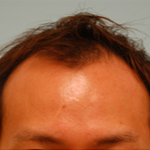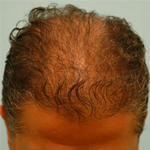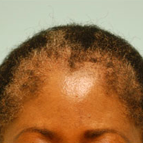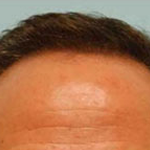Ethnic Hair Transplant Dallas
Dr. Lam and his experienced team perform ethnic hair transplant hair_transplant_procedure that are designed to meet the unique hair restoration needs of a full gamut of ethnicities. This encompasses hair transplantation that is sensitive to the specific differences of Asian, Hispanic, African American and Middle Eastern hair characteristics, as well as other ethnicities. Creating ethnically sensitive hair restoration results is critical to a successful outcome for patients of varying nationalities and Dr. Lam specializes in these unique hair restoration hair_transplant_procedure.
Being of ethnic origin himself, Dr. Lam is particularly attuned to the needs of the non-Caucasian patient, whether male or female, seeking hair restoration.
Ethnic Hair Transplant
Ethnic hair restoration goes beyond good hairline design or even varying differences in design, although this is critically important since natural hairlines among ethnicities are markedly different. Ethnic transplant hair_transplant_procedure must also take into consideration differences in inherent hair characteristics in order to achieve natural results.
For example, in Asian hair transplantation, the typical characteristics of very thick, straight black hair set off against a pale skin background dictates that hair implants be placed at very low angles to appear natural. During African American hair restoration, curlier black hair must be harvested with precision and placed in such a way that the hair matches the exit angles of the scalp. Similarly, Middle Eastern hair restoration and Hispanic hair transplantation both require that patients’ naturally coarser hair be placed at the proper angulation in order to create the most aesthetically pleasing and natural results, as well as to provide greater perceived hair density. By knowing what is needed to create natural results for patients of each ethnic type, Dr. Lam provides the most aesthetically pleasing results to coincide with each patient’s unique characteristics.
Ethnic Hair Restoration Techniques
Each ethnicity requires slight variations in how hair is harvested and implanted in order to achieve the most ethnically -correct and natural-looking results. Therefore, Dr. Lam does not apply a blanket approach to his hair restoration technique and instead customizes his technique to specifically meet the needs of each patient’s unique attributes, including ethnicity. However, no matter what the variables, Dr. Lam’s technique for ethnic hair transplants includes designing hairlines that naturally fit each patient’s age, gender, stage of hair loss, head shape and facial features, in addition to their ethnicity, to create the most visually -appealing two-dimensional and three-dimensional results that will age well over time. He also goes to great lengths to harvest donor hair in a way that minimizes discomfort while maximizing harvest yield and quality, employing both linear harvesting and follicular unit excision (FUE) methods as appropriate.
Dr. Lam personally performs each ethnic hair transplant in Dallas at his fully-accredited surgical center and utilizes a dedicated team throughout the entire process. He is involved in every aspect of the procedure in order to ensure the best possible ethnic hair restoration outcome and is committed to performing only one surgery per day in order to provide patients with the undivided attention they deserve.
Ethnic Hair Transplant Cost
The cost of an ethnic hair transplant will vary from patient to patient, based on a number of factors. These factors include the extent of hair loss, coverage area, hair density and other variables that may affect the number of grafts required as well as the methods used during the procedure. During an initial consultation with Dr. Lam, he will assess your hair transplant needs and will provide you with detailed information regarding how much your ethnic hair transplant costs based on your unique needs. The cost of a hair transplant is not specifically affected by differences in ethnicity, but rather by a selection of variables deemed necessary to meet your specific hair restoration needs.
Causes of Ethnic Hair Loss
Many causes of hair loss affect different ethnicities in the same way, whether due to typical patterns of baldness or varying skin, hormonal and health conditions. There are certain causes, however, that may be more evident in particular ethnicities, due to the nature of the patient’s skin and hair or the way hairstyles are worn. For example, traction alopecia can affect African Americans that tightly braid their hair. This is just one example, and we have an entire section devoted to hair loss causes and how varying ethnicities may be affected.
Ethnic Hair Transplant Recovery
Recovery following an ethnic hair transplant is no different than that following any other type of hair restoration surgery. Most patients can return to usual activities within 24 hours, although strenuous activity should be avoided for about a week to avoid any potential injury or increase the risk of bleeding. You will have a few tiny scabs at the transplantation sites, but can wash your hair the day after surgery and can wear a hat or cap immediately following the procedure if you wish to cover up the scabs. Most people choose to take a few days off following surgery to fully recover, but it is not a requirement to do so.
Ethnic Hair Transplant Before and After Photos
Below are a few before and after photos of ethnic hair transplants performed by Dr. Lam. You can view additional photos in our Photo Gallery. All photos shown are the result of hair transplant surgeries personally performed by Dr. Lam.
Ethnic Hair Transplant Before and After Photos:
Learn More
About Dr. Sam Lam, Ethnic Hair Restoration Specialist
Dr. Sam Lam is a Board-Certified hair restoration surgeon in Dallas and is one of only fewer than 200 Diplomates of the American Board of Hair Restoration Surgery in the world. He is recognized as a specialist in ethnic hair transplantation for a variety of ethnicities, including those of Asian, African American, Hispanic and Middle Eastern decent, due to his exceptional artistry combined with superior technical skills, in addition to his thorough understanding of the differences affecting men and women of varying nationalities suffering from hair loss.
As a non-Caucasian himself, Dr. Lam is keenly aware of the importance of achieving hair restoration results that look and feel natural, despite unique characteristics of an individual’s hair. Due to his expertise on the subject, Dr. Lam has been asked to speak around the world on varying hair techniques and has also lectured on the topic of ethnic hair transplants at the Hair Transplant Cadaver Workshop in St. Louis, of which he is the Director. Additionally, Dr. Lam has authored two educational textbooks about hair transplantation, Hair Transplant 360, Volume 1 and Volume 3, and has written numerous scientific articles and textbook chapters.
Dr. Lam performs all ethnic hair restoration procedures personally along with a dedicated team at his fully-accredited surgical center in Dallas, the Lam Institute for Hair Restoration, and only performs one procedure per day to provide each patient with the dedicated attention to detail they deserve.
Contact Us For An Ethnic Hair Transplant Consultation
Dr. Lam provides initial consultations during which he will fully assess your specific hair restoration needs and will discuss your desired outcome, as well as explaining all aspects of an ethnic hair transplant procedure, including costs. To schedule a consultation, call our office at 972-312-8105 or email us and we will get back to you to set up an appointment.
Ethnic Hair Restoration in Dallas and Worldwide
Although Dr. Sam Lam performs ethnic hair transplants in Dallas, Texas, his exceptional reputation, especially as it relates to ethnic hair restoration, draws patients from around the world. For patients traveling to Dallas for hair transplants, Dr. Lam offers a concierge service to help with travel and lodging accommodations.
Learn More
- View our Hair Transplant FAQ’s
- Learn more about Dr. Lam’s Hair Transplant Technique
- Learn more about Non-Surgical Hair Restoration Options








